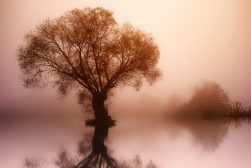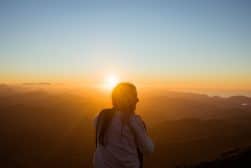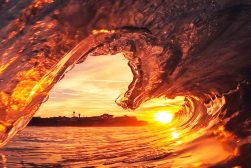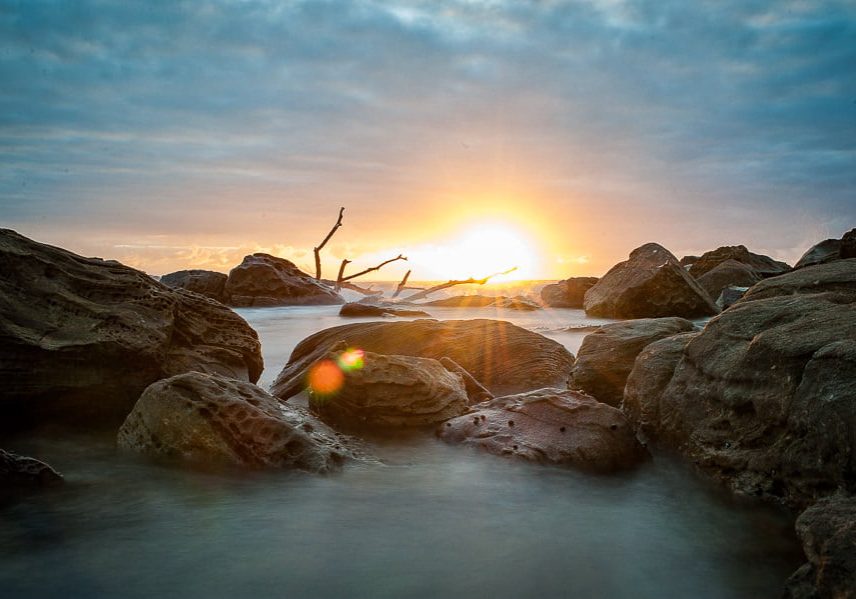
Sunrise vs Sunset Photography: Main Differences Compared
Want to know the differences and pros and cons of shooting at sunrise vs sunset? This photography guide is for you. Read on!
Learn | By Greg Cromie
In this guide to sunrise vs sunset photography, I’m going to explain the key differences and explore which is better.
Whether you’re new to photography or a seasoned professional, knowing the best time to shoot results in better images.
I’m a big advocate for taking photos whenever the inspiration hits you. But, there’s certainly something special about taking photos during sunrise or sunset.
Plus, there are some unique advantages to getting out and taking photos at each end of the day. Some of these are subtle, and others are going to help you make your photos shine (pardon the pun!).
Generally speaking, natural light during the day is much flatter and can have an unappealing amount of glare. But the natural light at sunrise and sunset can add warmth and dimension to a setting.
What’s more, these times of day can introduce some beautiful weather effects to add drama to your composition.
Let’s take a look at all you need to know for photographing during sunrises and sunsets.
(Want to learn even more? See our guide to sunset photography.)
Benefits of Sunrise Photography
If you’re more than happy to set the alarm, get out of your warm bed and travel to a destination, then your pain will be rewarded with sunrise photography.
The benefits of a sunrise shoot certainly make your early-morning efforts well worth it.
What you can capture during sunrises can’t be achieved at any other time of the day.
But a word of advice; be sure to rug up, pack a flashlight and don’t forget your gloves!
Let’s take a closer look at the benefits of sunrise photography.
Unique Weather Effects
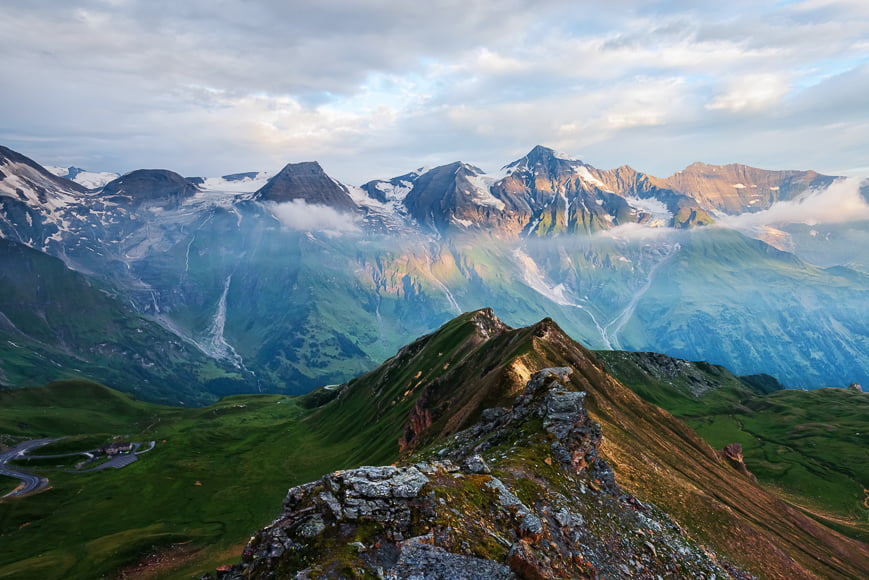
One of the best things about sunrise photography is the fascinating weather effects you can capture to add drama to your images.
This is especially beneficial in landscape photography – a genre that tends to work best during sunrise and sunset. So it always pays to check the weather forecast for the area you intend to travel to.
Haze
The sky in the morning is probably at its cleanest as there’s minimal haze.
Haze is caused by airborne particles that tend to be more obvious in the afternoon – smog, dust storms, bush fires and pollution are the biggest offenders.
While haze is strong in the afternoon, fortunately in the morning haze tends to be low. This is due to generally calmer weather conditions and less pollution overnight that gives the particles a chance to dissipate and settle to the ground.
As a result, your sunrise shots can have crystal clear skies.
Fog and Mist
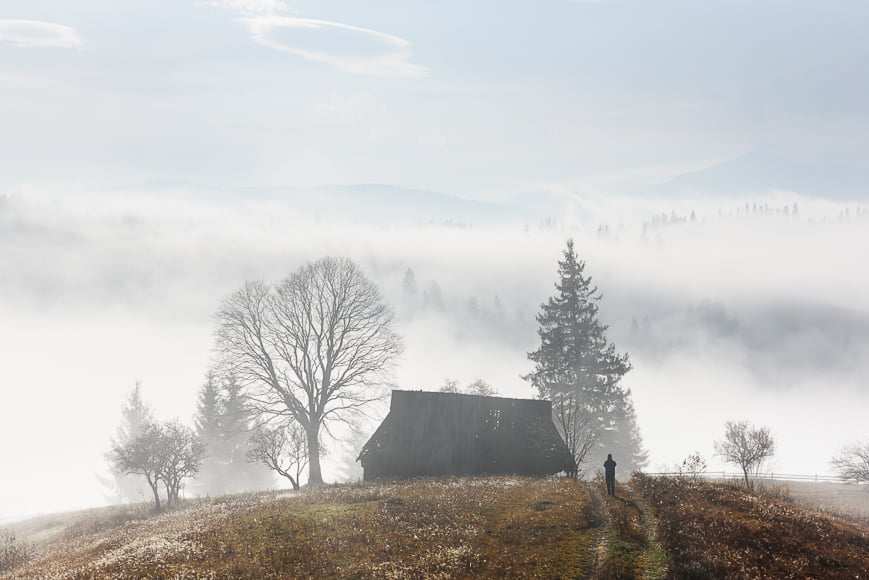
Another interesting sunrise effect is that of fog and mist. Fog occurs when water vapour condenses and forms visible water droplets in the air. Some locations are prone to morning fog and ground mist due to their topography.
How Much Do You REALLY Know About Photography?! 🤔
Test your photography knowledge with this quick quiz!
See how much you really know about photography...

Both of these elements are fascinating and can add to your composition and story. For example, fog creates mystery, mood and drama.
Fog and mist can be very fleeting occurrences and are not always guaranteed to be present. So a pinch of good fortune combined with some weather forecast study will improve your chances.
Plus, if you’re photographing in an area that you’re familiar with, you’ll have gotten to know the kinds of conditions that cause fog and mist.
Clouds
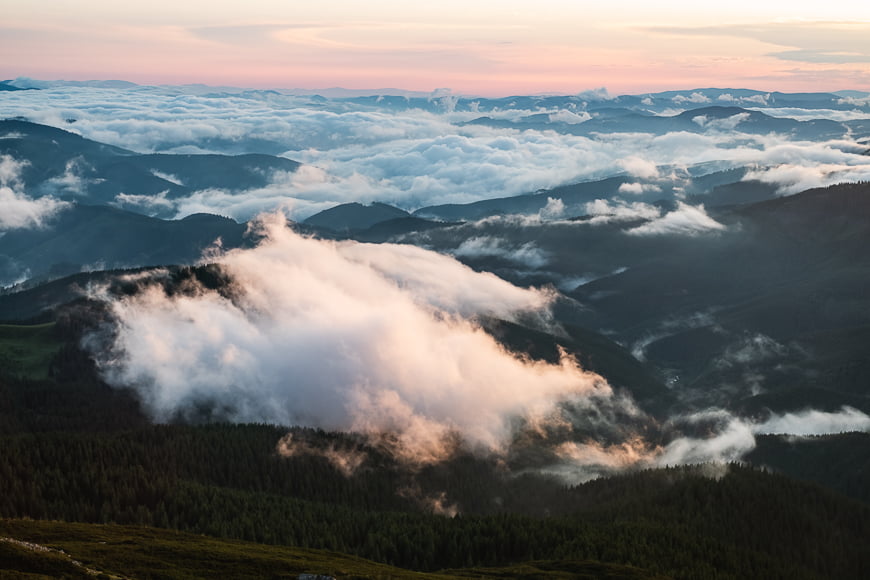
Another popular benefit of sunrise photography is the part that clouds play in creating a composition.
This is especially crucial in landscape photography as anyone can photograph the same scene, but the clouds will never be the same again. In some situations, the hilly or mountainous terrain can result in very low cloud cover (not to be mistaken with fog).
I’m sure you’ve seen the time-lapse footage of clouds rolling over mountain tops and down their flanks to form in valleys. This is called cloud inversion and occurs when the air near the ground is much cooler than the warmer air above.
Just like in those videos, you too can capture these unique conditions in your images.
Aside from cloud inversion, there are your regular everyday varieties, but thanks to the morning light, they glow with warmth and vibrancy. Cirrocumulus, Stratocumulus or even your garden-variety Cirrus clouds draw the viewer into the scene.
Cool Morning Light
As we discussed with the impacts of haze, there are usually fewer particles in the air at sunrise.
Haze tends to be a warm, muted tone that reflects warmer light when the sun hits it. Remove the haze, and the light tends to be cooler and generates an appealing glow.
And, if you’ll allow me to get scientific for a moment, the temperature of the light is impacted by a phenomenon known as the Doppler Shift. This is an effect caused by how the earth rotates towards the sun.
This results in a shift in the frequency of light waves approaching earth. This effect causes light to compress and, in turn, results in a bluer or cooler light.
You may also want to use a CPL filter to make the most of the variations in morning light.
Avoid The Crowds
While you’re in the middle of cursing yourself for deciding to get up before the birds, consider this benefit.
If you have to travel to a location for your sunrise shoot, there’ll be no traffic. You’ll have the road to yourself, and there’ll be ample parking when you get there.
Most people will still be fast asleep in their nice warm beds so you’ll have the location all to yourself. This can be especially beneficial if you’re travelling and the scene you want to photography is often packed with tourists.
Or, if you want to shoot a landscape at a beach, there won’t be umbrellas, towels and deck chairs in your way.
If anything, the only other people you will see out and about for a landscape shoot is another photographer. If this is the case, say g’day and agree to stay out of each other’s shots and be aware of where each is standing.
I’ve achieved great moments of tranquillity while standing on a deserted beach with my camera, watching the sun peak above the horizon. Romantic nonsense aside, landscapes with other people in them tend to lose their charm.
For the street photography folk, shooting at sunrise can be very advantageous. You can set up in a location where you know an early shaft of sunlight will fall.
This is what I call the Stonehenge Effect as the buildings act as blocks that screen the sunlight. Then all you need is that random individual who is out and about early to walk into the frame.
As it turns out, street photography doesn’t need a lot of people to make it effective.
Benefits of Sunsets for Photography
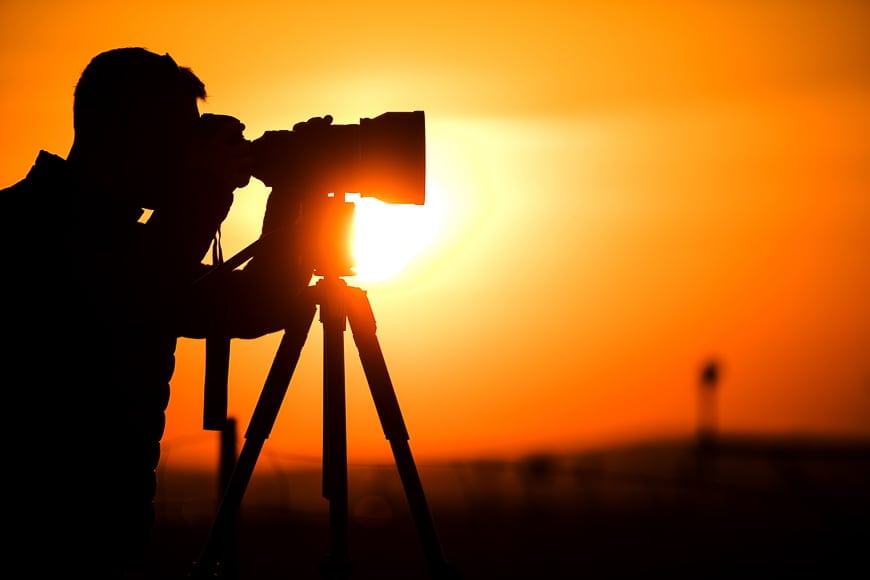
I come from a family of early risers and my mother would always say ‘we are fowls and not owls’.
But if you come from a family of owls and are offended by the idea of getting up so early, then sunset photography is for you.
Next, we’re going to take a look at the benefits of shooting during sunsets and how you can optimise your experience and outcomes.
Like sunrises, sunsets offer gorgeous golden light – but there are some clear differences between the two.
Time To Prepare
With sunrise photography, you have to set up your gear in the dark if you want to be well prepared to get the shot. That means there’s a risk that your composition could be compromised by some hideous object that just wasn’t visible in the darkness.
With sunset photography, you have all day to plan and prepare for the shoot. You can arrive with plenty of time to scout for both the general area and the location. What’s more, you can spend some valuable moments framing up your shot and composition.
This is especially handy in landscape photography as you can see and predict everything: where the waves are crashing, where the clouds are forming and where foreground subjects appear.
Then, once you’ve set up your gear and composition, you can time your shoot to make the most of the sunset and the appearance of the gorgeous golden light.
Work With The Weather
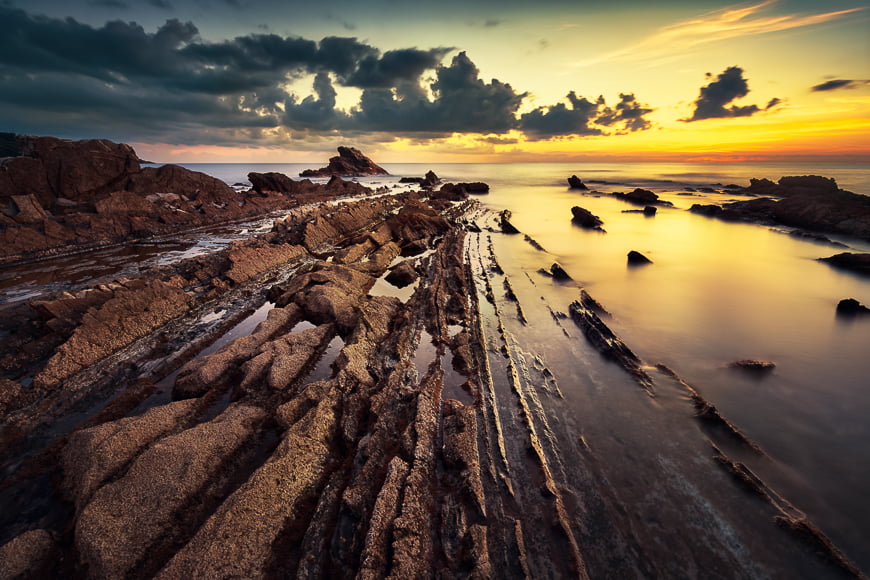
Just as we discovered with sunrise photography, there are some interesting weather effects to consider when photographing sunsets. They have their unique appeal and impacts on the composition you are creating.
And this can apply to shooting landscape, architecture and even street scenes. Let’s cover some of the weather-related considerations that can impact sunset photography.
Haze
Earlier we talked about haze and how it’s an unattractive nuisance caused mostly by dust, smoke and pollution.
Unfortunately, haze is often far more noticeable during the afternoon as the day’s activities of humanity have stirred up the dust. Industries and cars have been pumping pollution into the air, and it hasn’t had the time to settle.
But, during sunsets, you can turn haze into an advantage. If you’re shooting landscapes or cityscapes at sunset, you can achieve a striking look all thanks to the haze in the air. Having a bank of haze hanging in the air above a distant city can add a lot to your story.
Clouds
While fog and mist are generally not evident at sunset (the earth has become too warm for that), there will, of course, be clouds in the sky.
And, thanks to the amount of time you have to prepare for a sunset shoot, you can keep track of the cloud activity. If you enjoy photographing storms across the ocean while the sun is setting, you can track the clouds to get an idea of when they will be in the frame.
But by far the most important role that clouds play in sunset photography is to act as a pair of giant curtains for the setting sun.
Thanks to the warm light experienced during sunsets, clouds will illuminate in shades of purple, orange and yellow. And if they’re broken up a little with rays of light streaming through, then you have a winner.
Making clouds an important element of your image can also help to transform a dull landscape shot into something truly special.
50 Shades Of… Gold
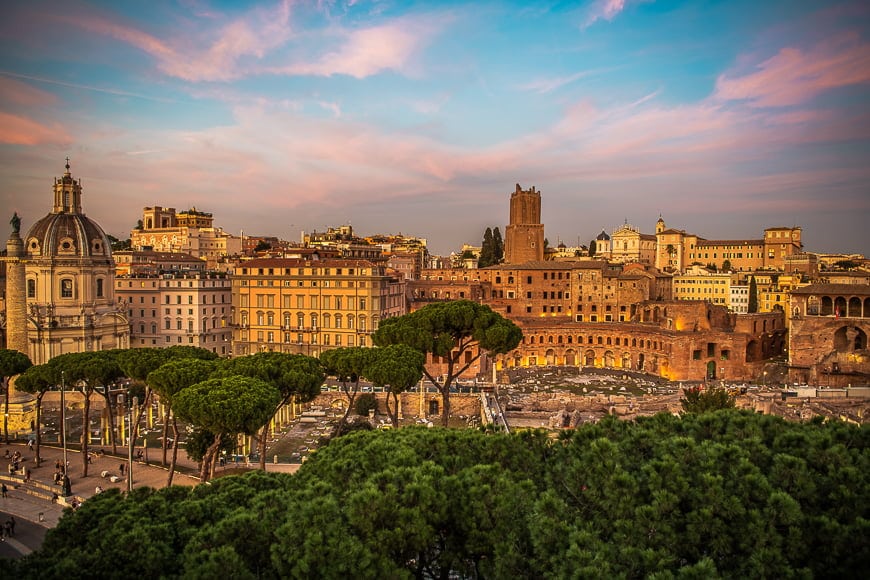
Let’s face it; there’s a reason why photographers call the time right before sunset the golden hour!
While technically you also get a ‘golden hour’ in the minutes after sunrise, the afternoon golden hour has a uniqueness to it.
The quality of light experienced at that part of the day is exceptional and provides a warm glow to most photography genres. But it’s especially welcome for those that photograph landscapes – see our guide to how to take golden hour photos.
Once again, the play of light can be interrupted by hills and mountains just as much as by city buildings. And yes, the Stonehenge Effect (see above) is very compelling at this time of day.
By far, the greatest benefit of shooting at sunset is the golden light – it just makes everything pop, including skin tones.
It’s also important to note we can once again thank haze particles reflecting more of that warmer light in the evening than in the morning.
And going back to our science class, at sunset the earth is rotating away from the sun. So the waves of light lengthen and cause a Doppler Shift in light towards warmer tones.
Sunrises vs Sunsets | Final Words
Regardless of being an owl or a fowl, you can maximise your images with richer light at sunset or sunrise.
As for which is better, that can often depend on the mood and story you want to tell in your images. If you’re going for that otherworldly ‘land before time look’, then I would make an effort to get up early and shoot at sunrise.
However, if you’re going for an ‘end of a long day’ or ‘the world prepares for slumber’ appeal, then go for the warmer tones of a sunset.
Personally, I find sunset far more accessible than sunrise for the reasons stated above. You can plan your shoot far easier and generate gorgeous and appealing images with the golden glow of the sun.
Now go and take a look at some funny sunset captions for Instagram.

Check out these 8 essential tools to help you succeed as a professional photographer.
Includes limited-time discounts.





